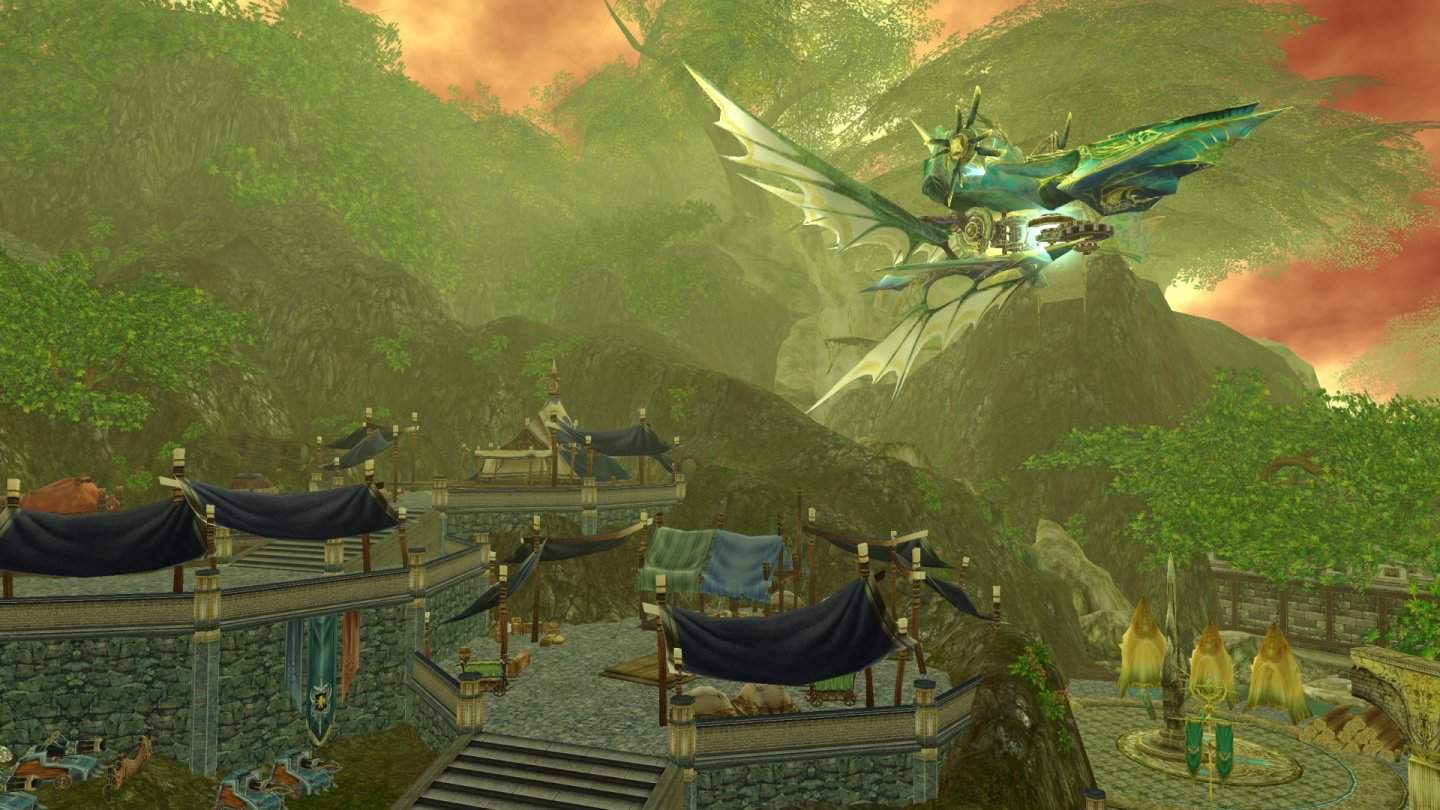You can trust VideoGamer. Our team of gaming experts spend hours testing and reviewing the latest games, to ensure you're reading the most comprehensive guide possible. Rest assured, all imagery and advice is unique and original. Check out how we test and review games here
You don’t have to be a rocket scientist to work out why fantasy MMORPG Runes of Magic’s done well for itself. From my review of the game in April last year: “Runes of Magic, put simply, is WoW sans the Blizzard magic dust.”
And also, more importantly, sans the subscription fee. This is the thing: Runes of Magic gives the fantasy MMO fan the chance to play a World of Warcraft-like experience for absolutely nothing. It’s not quite as good, of course, but how can you complain? It’s free. If you want, you can dip your virtual toe into the murky waters of micro-transactions, paying to make the process of playing the game more convenient. But if you refuse to fork out your hard-earned cash you won’t miss out on Ãœber cool equipment because the item shop doesn’t sell the good stuff anyway.
It’s a business model that’s proved hugely successful over the last 12 months. Runes of Magic recently celebrated its one year anniversary, and marked the occasion by revealing it has more than three million registered users. But there’s more to Runes of Magic’s success than player appeasing micro-transactions.
Taiwanese developer Runewaker Entertainment and German publisher Frogster Interactive have also kept players interested by introducing substantial expansions often and regularly – at current pace every six months or so. If the “play WoW for free” pitch entices players to try Runes of Magic out, the developer’s punishing expansion schedule keeps them coming back for more.
And there’s no sign that Runewaker will take its foot off the gas. Only three months after the release of the last zone of the game’s first expansion: Chapter II – The Elven Prophecy, we’re in a cosy room at a plush West End hotel to get a sneak peak at Chapter III – The Elder Kingdoms, due out in the middle of May. Acting as tour guide is Frogster community manager Julien Crevits, who begins his presentation by providing some background to the virtual wonders looming over the virtual horizon.
The end of Chapter II closed the Demon Lord storyline, leaving Chapter III free to begin a plot anew. Here it is: the young King Callaway rules the brand new continent, Zandorya. A huge alliance, consisting of six factions, has broken apart, and now the king has to deal with the fallout. The king asks the player to help bring back peace and harmony to Zandorya. That’s where you step in.
The first zone players will explore when they set foot on the new continent is called Thunderhoof Hills, which absolutely doesn’t remind us of WoW’s tauren capital city, Thunder Bluff. To set foot on the land you’ll need to be about level 55 – so it’s dedicated to high level players. Chapter III raises the level cap to 60, and Thunderhoof Hills will take you up to about 56 or 57. This grassy, hilly area is evidence of what Frogster calls a “new zone concept”. The idea is that there will be a wider variety of landscapes within a single zone. So, in Thunderhoof Hills, you might see a waterfall one second, then Centaur clans living below huge trees the next, or explore a sprawling city before finding yourself in depressing ruins. Frogster wants to attract players to every part of each of the new zones, which didn’t really happen before.
It won’t be long, however, before you find yourself drawn to the brand new capital city: Dalanis, the city of the king. Visually, it rekindles memories of World of Warcraft’s Stormwind, complete with a towering statue of the former ruler, King Kalume, and appropriately epic-sounding background music. Everything you’d expect from an MMO capital city is included: there’s an auction house, you have access to your character’s house, to the guild house system, to crafting houses, and all the rest of it. Dalanis will act as the social hub of the zone, with loads of quests and NPCs to chat to. Speaking of quests, Chapter III raises the quest count significantly. Each new zone will include more than one hundred quests; Frogster has announced three zones so far for Chapter III, so there will be at least 300 new quests to get to grips with.
Here’s an example: some parts of Dalanis are abandoned, where guards have withdrawn and bandits roam the streets. Here, there’s a Public Encounter quest to get stuck into. Monsters are coming out of a dungeon, and you have to master several stages of the PE to fend them off. There will also be new dungeons, the first of which is the Dungeon of Dalanis. It’s set in a prison below the main city, and is packed with predictably scary monsters. The task of the player is, of course, to fight them. Chapter III will introduce at least nine new dungeons; three in each new zone.
Crevits then switches from player versus environment to player versus player. Although players have been enjoying the beta form of the new “Siege War” feature, Chapter III will include the final version. It introduces a number of new features, including stone castles, new buildings, new siege weapons, including player transports, turrets, and rams, and new abilities. We’re shown a map displaying two castles, six resource nodes, and a raft of bridges and islands. We see buildings that sell potions, stables that increase the riding speed of all your guild’s mounts, a library that sells upgrades, and the Guild Throne, which sells powerful one-use spells. One of these is the Thunder Bonecracker, an area of effect spell that does massive damage.
Siege War sounds great. To win, you need to storm the enemy castle through one of three doors, destroy the crystal inside, and capture all of the resource nodes on the map. Resource gathering is essential: everything is bought using resources gained on the battlefield. There’s a lot to think about, and, ergo, tons of depth. And, like most things MMO, it’s a work in progress. “You can use siege weapons, but you can’t damage the walls yet,” Crevits teases. “I’m saying yet because that’s a feature we are of course interested in. It’s something we’re thinking about, and would be much-liked by players.”
Perhaps the most interesting new feature, however, is the Marriage System. Crevits doesn’t say much about this – expect a proper reveal soon – but what he does say piques our interest. The Marriage System will allow two players to marry. You can only be married to one player at the same time (although we’ve seen nothing to suggest you won’t be able to cheat), and gay marriage is allowed. There will be special bonuses up for grabs, too, but Frogster isn’t telling. “It could be a ring to teleport to the other person,” is all Crevits will suggest. “Virtual ceremonies” are unconfirmed, but seem like a good bet.
What comes as some disappointment, however, is the fact that unlike Chapter II, Chapter III won’t introduce any new races or classes. Instead, Runewaker is focusing on rebalancing the skills that already exist in the game. “We know that there are many requests to have a look at the class balancing,” explains Crevits. “Since we have a dual class system, it’s not easy to include just one or two new classes or races, because it’s always a question of balancing. We’ve been having an expansion every six months. It’s a lot of work. Creating a new race means a new starting zone, new animations, new sounds, new everything. However, for Chapter IV, you never know. Check gamescom for details.”
With that tease, our presentation ends. What’s clear is that Chapter III looks set to continue Runewaker’s good work in keeping Runes of Magic’s growing player base interested with some high-end features other subscription-based games would do well to notice. Sure, on the face of it, Runes of Magic looks like a WoW clone. But under the virtual hood – and with the new marriage system perhaps even under the sheets – there’s plenty that’s unique.
Players will be able to enter the first zone of Runes of Magic: Chapter III – The Elder Kingdoms in April, with a full release proper scheduled for the middle of May.
Runes of Magic
- Platform(s): PC
- Genre(s): Action, Adventure, Fantasy, Massively Multiplayer, Massively Multiplayer Online, RPG

/https://oimg.videogamer.com/images/0740/runes_of_magic_13.jpg)






